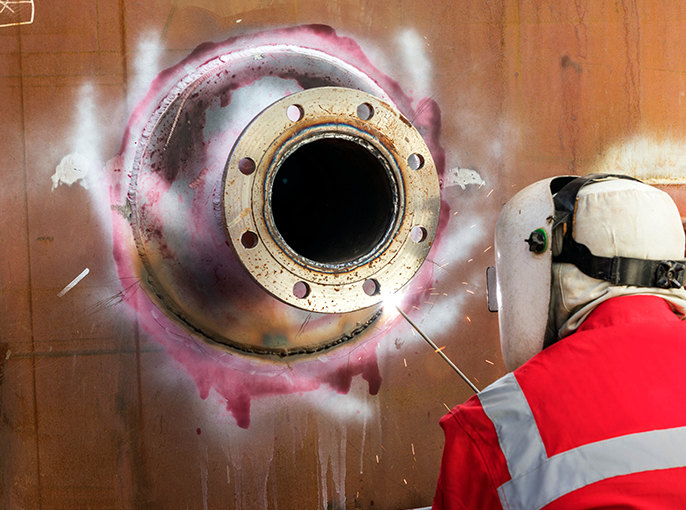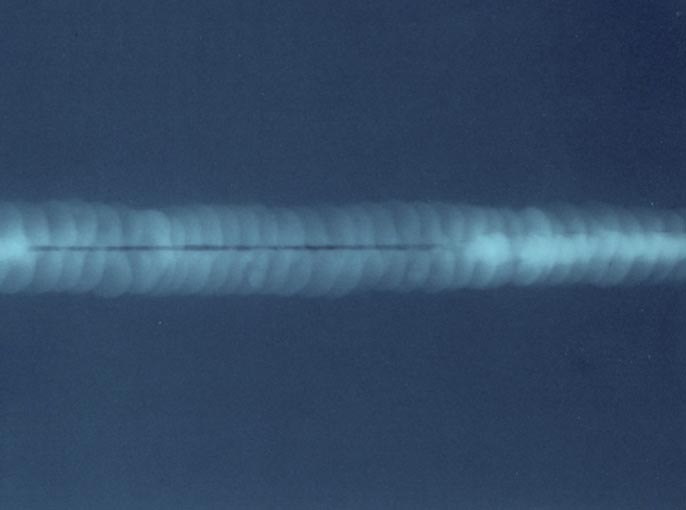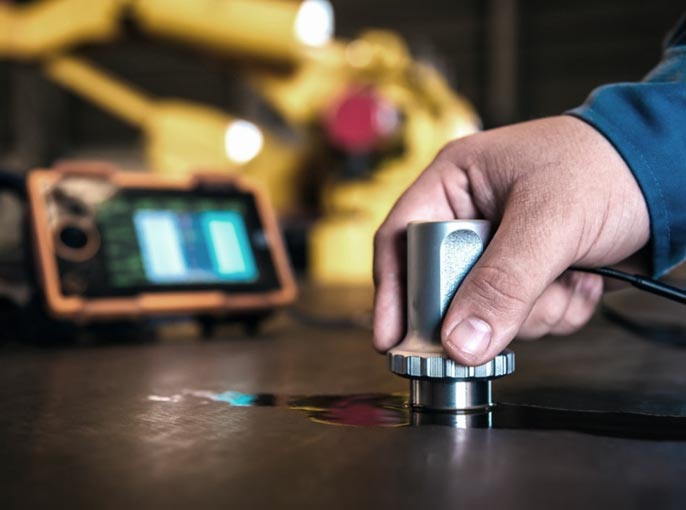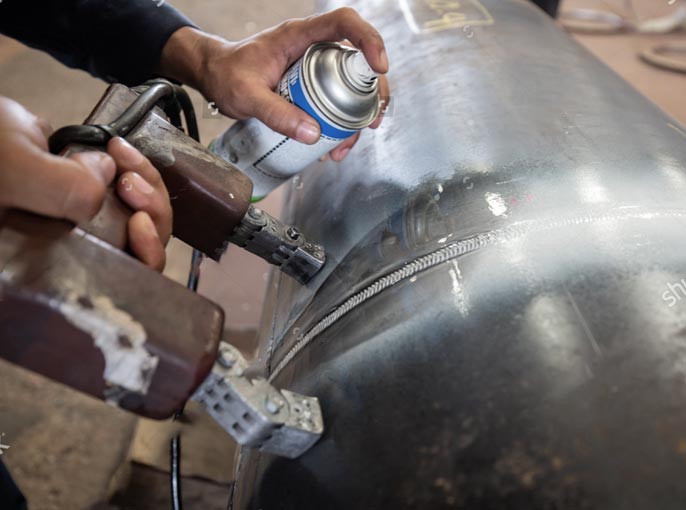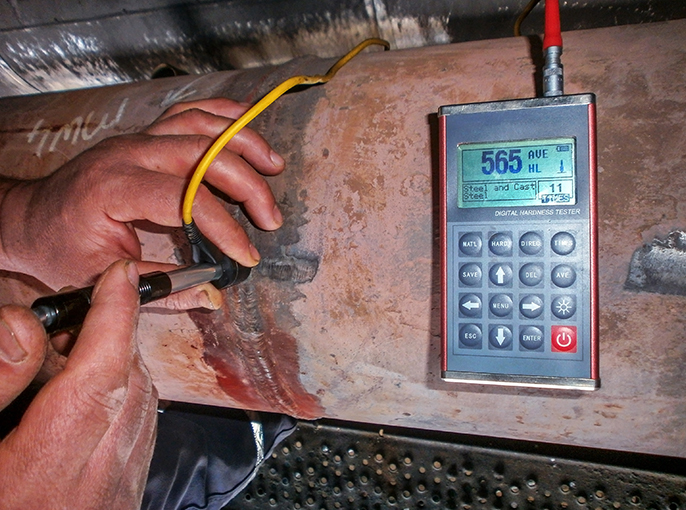Penetrant Testing (PT) is one of the simplest non-destructive test method utilized for detecting surface breaking discontinuities in non-porous, non-absorbing materials. Perhaps, the earliest form of Penetrant testing was done in rail road yards to check cracks in axels. The axles were soaked in oil overnight, removed from their oil bath, cleaned and a white powder applied. The axle would be lightly struck and oil would seep out of a crack, revealing its location. Modern Penetrant testing uses specially formulated dyes but still relies on capillary bleedout of the dye trapped in the flaw.
Penentrant Testing can be utilized on any non-porous, non-absorbing material, on surfaces, entire objects and complex shapes. Penentrant testing can be utilized on a wide variety of materials detect inherent, primary processing and in-service discontinuities. Examples of detectable discontinuities are:
Inherent: Ingot discontinuities such as Solidification cracks and porosity; Casting discontinuities such as Porosity, Shrinkage, Hot tears and Cols shuts.
Primary processing: Cracks during welding, straightening, bending, or due to internal stresses during processing, including heat treatment, plating and grinding. Porosity and surface opening inclusions in welds. Laminations detectable at the edge of the plate. Laps, Seams, and bursts, cracks in forging and forming operations.
In-service Discontinuities: Service cracks caused by overloading, fatigue or corrosion.
Penetrant Testing can be utilized to detect microcracks to 1 micrometer (1 x 10-3 mm) width. Some of the standards utilized at AEIS for Penetrant Testing are ASTM E-433, E-1135, E-1210, E-1208, E-1219, E-1209, E-165, E-1220, E-1418, E-1417, E-2297.
Our personnel are adept in performing penetrant inspections using:
-
Type I – Flourescent Penetrant Examination
- Method A – Water Washable
- Method B – Post emulsifiable, lipophilic
- Method C – Solvent Removable
- Method D – Post emulsifiable, hydrophilic
-
Type II – Visible Pennetrant Examination
- Method A – Water Washable
- Method B – Solvent Removable
In-house ASNT ACCP NDT Level III and II personnel ensure that ALL your penetrant inspection needs can be addressed, whether it be routine testing listed above or specialized examination such as filtered particle and electrified particle testing.
Let’s Connect
NDT. Non-Destructive Testing. That’s our Core Business. That is our Only Business. We live it, We breathe it. We are dedicated to it. Let us use NDT to take your business to new heights.



